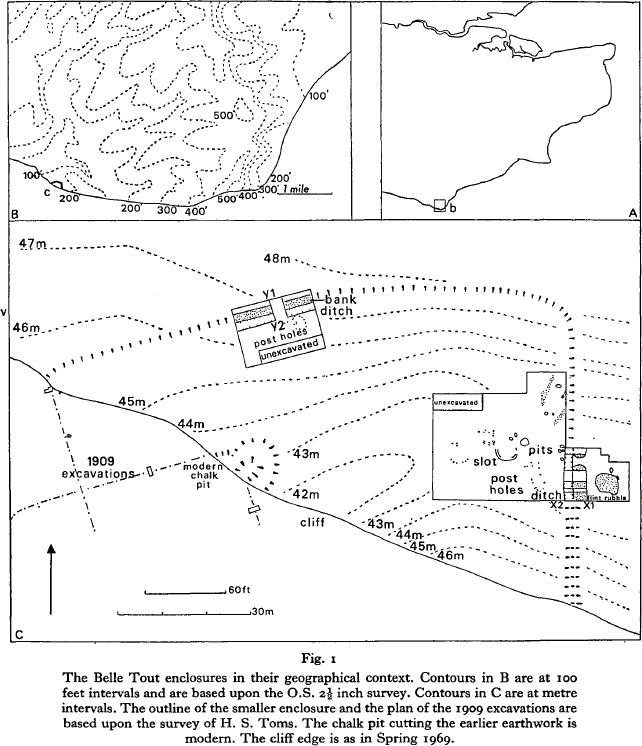Article contents
The Excavation of a Beaker Settlement at Belle Tout, East Sussex, England
Published online by Cambridge University Press: 06 September 2016
Extract
Belle Tout is the second of a series of headlands where the South Downs meet the English Channel between Eastbourne and Brighton. Three kilometres to its east, the chalk downland comes to an end at Beachy Head, while Birling Gap immediately to the west provides direct access to the shoreline. Belle Tout, in between, is a gorse-capped plateau of virgin downland, 40 hectares in area with chalk cliffs rising to a maximum height of 84 metres (fig. 1).

The even lines of the headland are only broken against the cliffs where a shallow valley runs down towards Birling Gap from the highest point at Belle Tout lighthouse. At a height of 40 metres this valley veers to the south and is cut by the present cliff edge. It was within the valley at this point that the Beaker site was discovered and excavated (NGR TV557956). The natural subsoil throughout is Upper Chalk save within this valley where the chalk is covered by a drift deposit of loam with patches of flint debris laid down under periglacial conditions. Under normal vegetation this surface loam would be acid, but a mildly alkaline reaction in the soil has been brought about by gorse roots penetrating to the underlying chalk.
- Type
- Research Article
- Information
- Copyright
- Copyright © The Prehistoric Society 1970
References
REFERENCES
- 15
- Cited by




